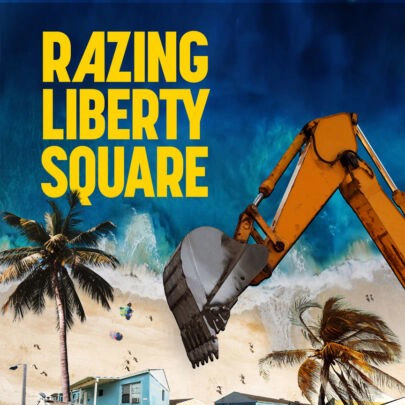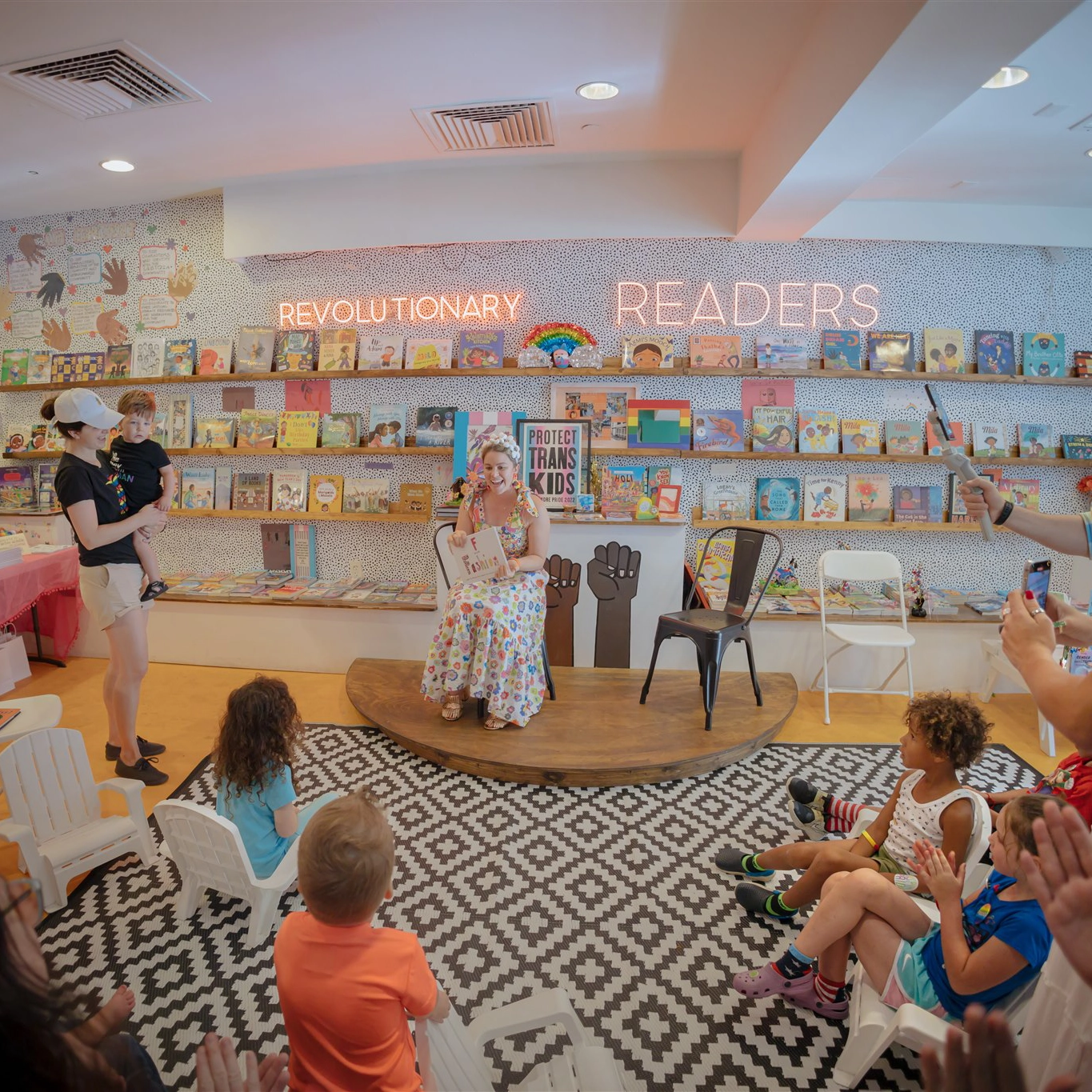Florida Filmmaker Mary Wharton on her new Tom Petty Film
Wharton's film Somewhere You Feel Free, which premiered this week at SXSW, draws on her personal connections to Petty and lost footage of him during the making of his Wildflowers album

While most of us were busy navigating the major changes to daily life imposed by the pandemic, Mary Wharton made the film that premiered this past Wednesday as the centerpiece of the South by Southwest film festival. The Tallahassee-born filmmaker spent the lockdown months putting together Somewhere You Feel Free, a rare window into the life and creative process of fellow Floridian Tom Petty, whose sudden 2017 death, at age 66, shocked his millions of fans. The film arrives as a companion piece to last year’s reissue of Petty’s classic 1994 solo album Wildflowers, which marked a crossroad in the musician’s life. Wharton expands on a trove of 16mm black-and-white footage shot during the recording sessions, framing that material with contemporary scenes shot on Super 16mm. “Real film has the grain and the crap and the junk around the edges,” she explains. “it’s just so beautiful to me.”
The old-school approach honors the spirit of the original source material, and also reflects the organic process of its subject. “My film shows you what it feels like to be Tom Petty,” says Wharton, who has been making music documentaries for the past 20 years. “It’s a little more delving into the emotions, where he was at, and what it felt like to him to be making his work.”
Since she was filming throughout the COVID-19 pandemic, Wharton directed via Zoom. “We had this whole crazy elaborate system,” she says, “of a laptop by the camera so I could speak to the person on camera and another laptop where I could view the feed from the cameras and a third one so I could communicate with the producer and the cinematographer. It was crazy but we made it work.”
Wharton spoke recently with Flamingo about the film and her personal connections with Petty.
How did you get involved with this project?
MW: Tom Petty’s daughter Adria is an old friend of mine. We worked together 20 years ago or more. We sort of drifted apart but we stayed in touch. She got in touch with me last summer and said they had found all this amazing footage of her dad, and they wanted to find a director to put it together into a film. I was immediately, “Yeah, I’m in!” I had a real good connection to the Wildflowers material. I had seen some of this material before, because it was originally shot by the filmmaker Martyn Atkins while they were making the Wildflowers album. Eleven minutes of it had been released as an electronic press kit for the album. I was working at VH1, which is where I met Adria, and one of the projects where I learned how music docs were made was a documentary about Tom Petty. I got to go to L.A., which was the first time I’d ever been to Los Angeles, and I met Tom Petty and I was working as an associate producer. They gave us some of this footage to use. I didn’t know there was an additional four hours of this studio footage. Plus the same filmmaker had shot the “Dogs with Wings” tour that was the Wildflowers tour. There was a lot of that tour material that had never been seen.
This archival footage was all shot in black-and-white 16mm that had to be digitized. What were the challenges of working with vintage sources?

MW: A lot of it didn’t have sound. It was a big project to just sort out what the material was. Sometimes my editor would have to figure out how to sync up sound by literally reading Tom’s lips to figure out what song he was singing. Luckily, she’s a really good lip reader. It’s such an incredible archive of material, and it was so great in the middle of the pandemic to have something like this which was a little radical that I could fall into, of trying to figure out what these pieces were and how we might be able to match up some of these sound files with some of the picture files. It was a little bit of trial and error and detective work. Real film has the grain and the crap and the junk around the edges, it’s just so beautiful to me.
That aesthetic takes me back to things that were shot in the 1960s. The first rock-docs, like Dont Look Back, D.A. Pennebaker’s film about Bob Dylan’s 1965 UK tour.
MW: Yeah. Pennebaker. The Maysles Brothers films about the Stones, and the Beatles. That was one of the things that was super exciting about this material … Real life is clumsy and awkward. By sitting through the clunky, awkward moments in the film you feel the verite, the real life of it all. It’s interesting to be seeing that now. Something that happened 25 years ago, with an artist who is no longer with us. Here we get to see them figuring it out, finding their way into the song. We see Tom saying stuff like, “I think I can do it. Let’s try it.” But he’s not sure of himself, and to see Tom Petty not be sure of himself was a little earth-shattering to me.
As you know from your own career, so many of these performers have been documented for so long and in so many different ways. There’s even a four-hour doc about Tom Petty made by Peter Bogdanovich, of all people. Did that weigh on your mind or were you able to set it aside?
MW: Absolutely, it was a consideration for me. I had not watched the Bogdanovich film until getting this project, and then I did look especially at that section about this time period. I didn’t want to do something that had already been done before. I wanted to at least be able to say something about Tom Petty that hadn’t already been said, and show you something about him that you hadn’t already seen. The cool thing about this project that allowed me to do that is that this material did not play a big part in that film, and this album was breezed past. I’m always fascinated with the idea of a pivotal moment in history. You can take this grand overview of a genre of music where there’s a moment that it clicks together. The birth of soul. The birth of rock and roll. People will pinpoint different moments of what they believe that is. For an artist like Tom Petty, this was clearly a pivotal moment, because he was making all these big changes in his life. He was leaving his longtime record label he had battled with. He was figuring out how to get out of his personal relationship with his wife. He struggled with that. Also, he was changing the nature of his band. It was not easy to cut ties. He was trying to figure out how to be a rock and roll star but still have some dignity. He was also sort of getting into the classic midlife crisis. What do I want my life to be like? What do I want my career to be like? What do I want my art to be like? That resonated with me as a person who has recently gone through my own midlife crisis.
How did growing up with a blues guitarist father—hot sauce raconteur Bill Wharton—shape your future encounters with musicians?
MW: It’s been a huge influence on me. My dad taught me so much about music history. He had this amazing record collection. One of his favorite things to do is sit around and play records all day long. As a kid, you want to get out of the house and not hang around your parents, but you’re stuck there because you can’t drive. But for me it was great to have a dad like that around. That experience was a great education for me, and my dad was I’m sure the one who introduced me to Tom Petty’s music when I was a kid. He was always going to the record store and bringing home what was new and interesting. Before MTV, before there was this instant information available to you about artists, you learned by going to the record store and playing what was new. I was lucky to have that in my house.





